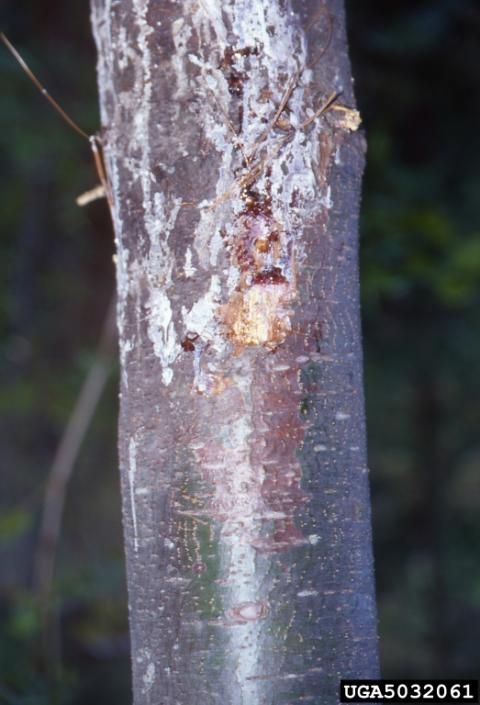
Joseph O'Brien, USDA Forest Service, Bugwood.org
White pine blister rust (WPBR) is caused by the fungus Cronartium ribicola. The disease was introduced into the United States from Europe in the early 1900s and spread quickly, causing significant white pine mortality. Because currants and gooseberries (Ribes sp.) are also a host for the disease, infection of white pine increases when they are planted nearby.
Certain species of currants and gooseberries were once considered resistant to transmitting the disease. Until recently, gardeners could plant these specific varieties with a permit. However, a survey in 2012 and 2013 on Ribes plants in New Hampshire confirmed WPBR on resistant varieties. In response to this re-emerging forest health threat, the N.H. Division of Forests and Lands changed the allowed list of approved currants and gooseberries.
The Basics
NH Pest Alert
WPBR pictures Maine Forest Service
Impact of White Pine Blister Rust (Story Map)
How to Identify White Pine Blister Rust and Remove Cankers USDA Forest Service Publication
White Pine Blister Rust -- Infection Incidence for Selected Areas of NH Lombard, Bofinger, 1999
The NH Division of Forests and Lands, in cooperation with the USDA forest Service, Canadian Forest Service, Cornell University, UNH cooperative Extension and the NH Department of Agriculture, Markets & Foods has completed a study investigating the infestation of white pine blister rust on immune or resistant gooseberries and currant (Ribes) bushes throughout New Hampshire. Information gathered suggest the blister rust disease has mutated in the northeast such that Ribes plants selected for genetic immunity to white pine blister rust are no longer immune. For this reason the Division of Forests and Lands jointly with the Department of Agriculture, Markets & Foods, has removed all immune black currant species from the list of approve plantings.
The new list of Ribes plants approved for planting in New Hampshire with a permit is as follows:
BLACK CURRANTS
- Crandall - Plant is often grown for its ornamental, yellow flowers and red fall foliage.
- Willoughby
RED CURRANTS
- Rondom - From a breeding program in the Netherlands
WHITE CURRANTS
- White Currant 1301 - High yielding, late. From Sweden.
GOOSEBERRY & GOOSEBERRY CROSSES
- Jostaberry - From Germany. Blackish fruits with bland flavor produced on thornless plants.
- Jahns Prairie - A joint USDA/Ag Canada release. Fruits are red and flavorful.
- Captivator, Careless, Clark, Crown Bob, Downing, Howards Lancer, Sabine
Research Publication: Impact of White Pine Blister Rust on Resistant Cultivated Ribes and Neighboring Eastern White Pine in New Hampshire. APS Journals October 2015, Volume 99, Number 10 Pages 1374-1382.

Map of 2013 survey

